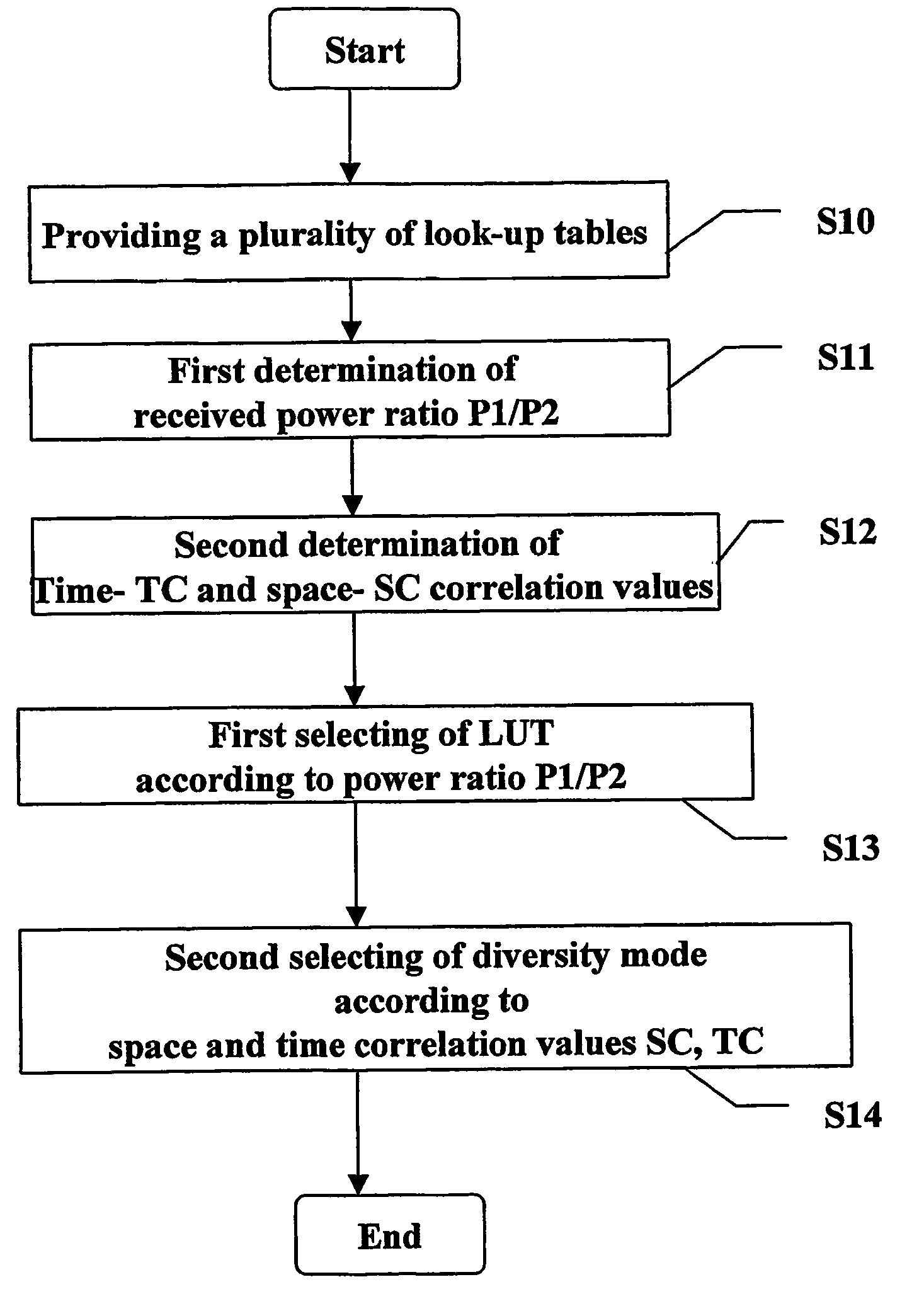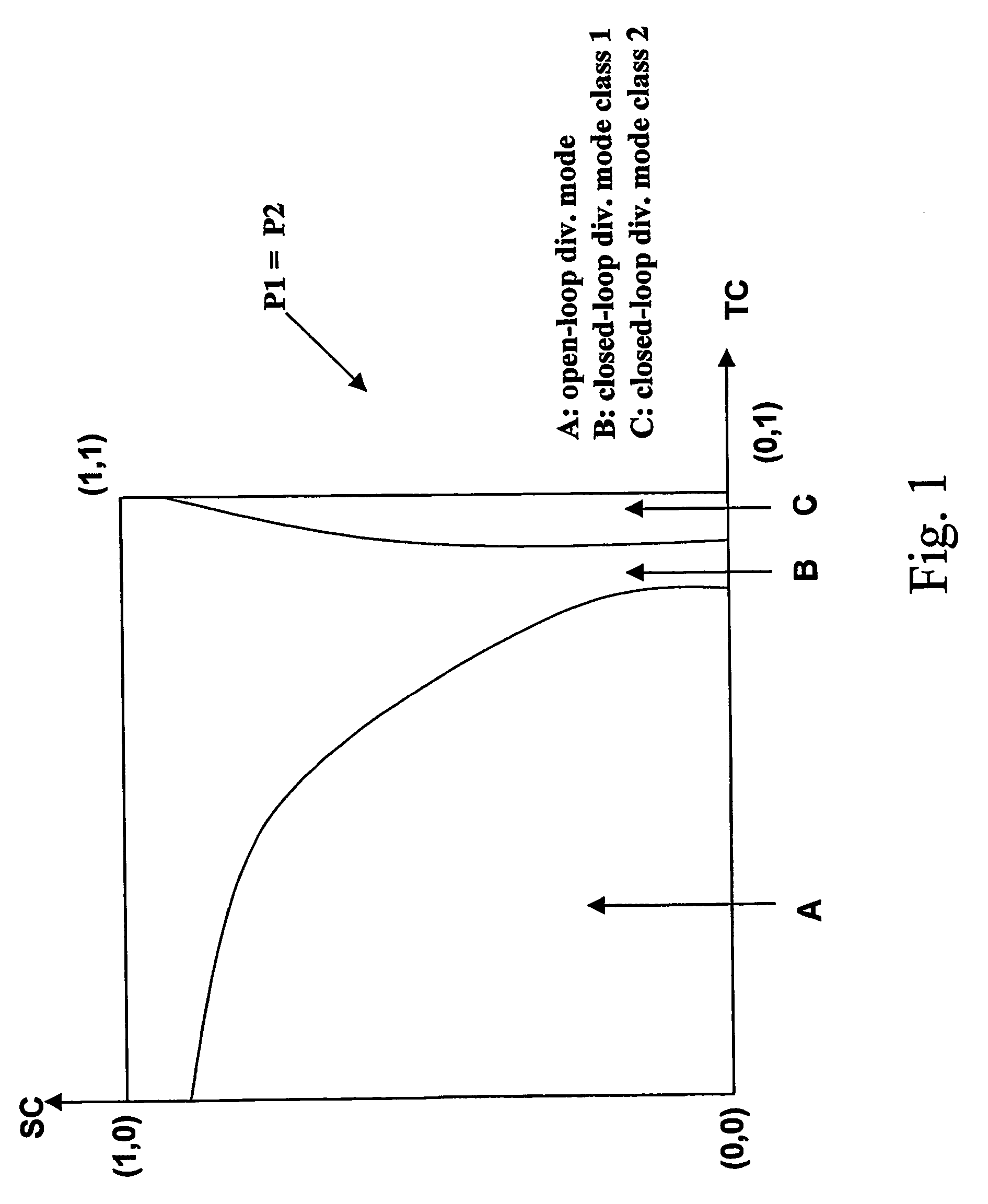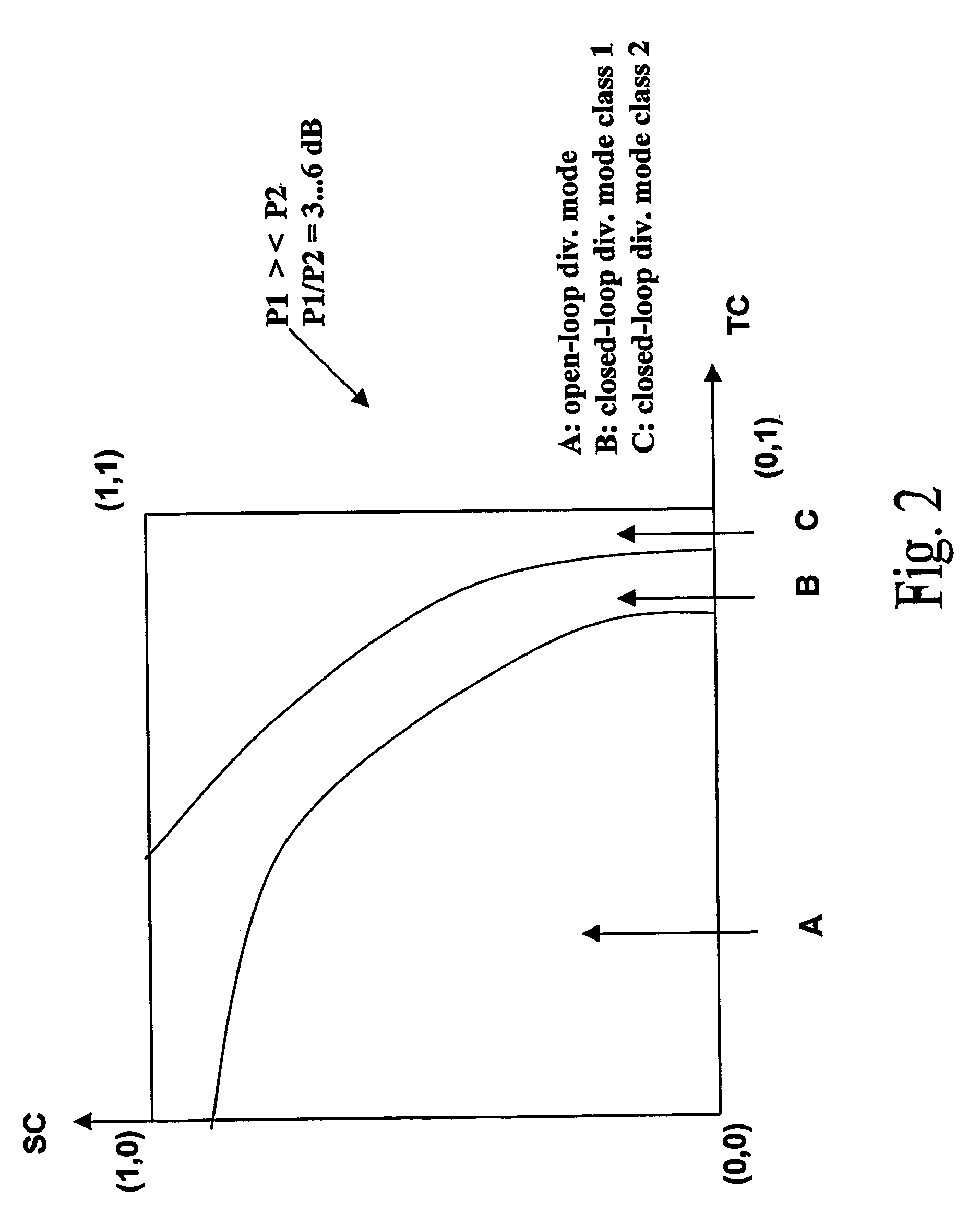Transmission diversity with two cross-polarised antennas arrays
- Summary
- Abstract
- Description
- Claims
- Application Information
AI Technical Summary
Benefits of technology
Problems solved by technology
Method used
Image
Examples
Embodiment Construction
[0055] In the following, the proposed mode selection procedure according to the present invention is outlined. It is to be noted that in the be low procedure all steps are performed in the transmitter (e.g. BS). The procedure as such basically comprises the following steps when selecting a diversity mode A, B, C to be applied by a transmitter having two cross-polarized antenna arrays Ant1, Ant 2, each representing a diversity branch, for transmission diversity.
[0056] Firstly, a plurality of diversity mode performance chart look-up tables LUT, LUT1, LUT2, LUT3 are provided, step S10. Each performance chart look-up table maps a respective individual diversity mode A, B, C out of a plurality of individual diversity modes to a respective pair of time correlation value TC and space correlation value SS for said two cross-polarized antennas, and a respective individual diversity mode is presented by a mapping, area (in the chart). The plurality of performance chart look-up tables is para...
PUM
 Login to View More
Login to View More Abstract
Description
Claims
Application Information
 Login to View More
Login to View More - R&D
- Intellectual Property
- Life Sciences
- Materials
- Tech Scout
- Unparalleled Data Quality
- Higher Quality Content
- 60% Fewer Hallucinations
Browse by: Latest US Patents, China's latest patents, Technical Efficacy Thesaurus, Application Domain, Technology Topic, Popular Technical Reports.
© 2025 PatSnap. All rights reserved.Legal|Privacy policy|Modern Slavery Act Transparency Statement|Sitemap|About US| Contact US: help@patsnap.com



